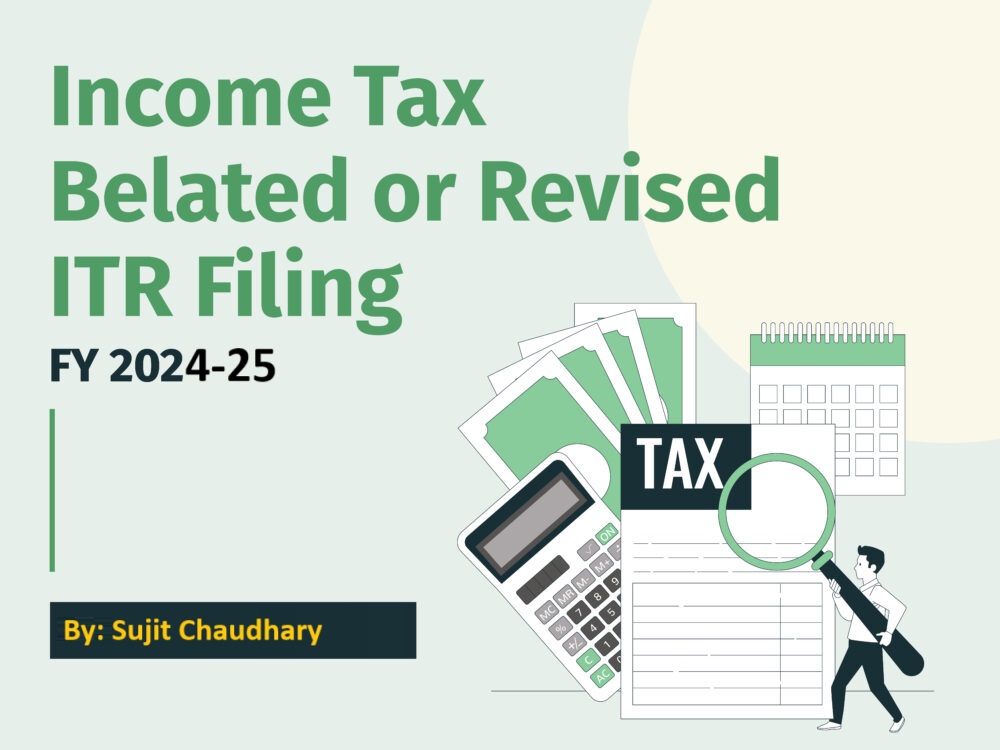Section 148 of the Income Tax Act, 1961, empowers the Income Tax Department to issue notices for reassessment of income in cases where it believes that income has escaped assessment. This provision is aimed at ensuring compliance and plugging any gaps in tax collection.
This article explains the key aspects of Section 148, the conditions for issuing notices, and the implications for taxpayers.
What is Section 148?
Section 148 allows the Assessing Officer (AO) to reopen and reassess income tax returns if there is reason to believe that income chargeable to tax has not been assessed or under-assessed in a previous financial year.
The reassessment process begins with the issuance of a notice under Section 148, requiring the taxpayer to file a return for the relevant assessment year.
Key Provisions of Section 148
- Basis for Issuing a Notice
A notice under Section 148 can be issued only if the AO has reason to believe that:
The taxpayer’s income has escaped assessment.
There has been underreporting or non-disclosure of income.
The reasons must be recorded in writing and approved by a superior authority before the notice is issued.
- Time Limits for Issuing Notices
The law specifies strict timelines for issuing a notice under Section 148:
The time limit is calculated from the end of the relevant assessment year.
- New Framework Introduced in 2021
Post the 2021 amendment, the reassessment procedure has been streamlined. Key changes include:
Show-Cause Notice: Before issuing a notice under Section 148, a show-cause notice must be sent under Section 148A(b), giving the taxpayer an opportunity to explain why reassessment should not be initiated.
Approval from Authorities: The Assessing Officer must obtain prior approval from the Principal Commissioner or Commissioner of Income Tax.
Procedure for Reassessment Under Section 148
- Notice Issuance: The AO issues a notice under Section 148, requesting the taxpayer to file a return for the relevant year.
- Taxpayer’s Response: The taxpayer must file the return and provide all necessary documents and explanations.
- Assessment Process: The AO examines the information and finalizes the reassessment under Section 147.
Rights and Obligations of Taxpayers
Taxpayer’s Rights
Right to Explanation: Taxpayers can respond to the show-cause notice under Section 148A(b) and present their case.
Right to Appeal: If dissatisfied with the reassessment order, taxpayers can file an appeal with higher tax authorities.
Right to Reasons: Taxpayers can request the recorded reasons for issuing the notice.
Taxpayer’s Obligations
Timely Compliance: File the return and provide the required details promptly.
Maintain Records: Ensure all financial records and documents are available for the relevant assessment year.
Penalties for Non-Compliance
Failure to comply with a Section 148 notice can lead to:
- Interest under Section 234A, 234B, and 234C: For late filing and tax payment.
- Penalties under Section 271(1)(c): For concealment of income or furnishing inaccurate details.
- Prosecution under Section 276CC: For willful failure to furnish returns.
Examples of Section 148 in Action
Example 1: Undisclosed Income
Scenario: Mr. A earns ₹10 lakh from freelance work, but he does not report it in his ITR.
Action: The AO receives information about the unreported income and issues a notice under Section 148.
Example 2: High-Value Transactions
Scenario: Ms. B deposits ₹60 lakh in cash in her bank account during a financial year. This is flagged as a high-value transaction.
Action: The AO suspects underreporting of income and initiates reassessment under Section 148.
How to Respond to a Section 148 Notice
- Understand the Notice: Review the reasons provided and determine if the notice is valid.
- File a Response: File the return as required and submit all supporting documents.
- Consult a Tax Professional: Seek expert advice to ensure accurate and timely compliance.
- Challenge Invalid Notices: If the notice is issued without sufficient grounds or beyond the time limit, challenge it through appropriate channels.
Conclusion
Section 148 of the Income Tax Act is a powerful tool that allows the Income Tax Department to reassess cases where income has escaped taxation. While it ensures compliance and transparency, it also places a responsibility on taxpayers to maintain accurate records and respond promptly to notices.
Taxpayers should remain vigilant and seek professional assistance if they receive a Section 148 notice to avoid penalties and ensure smooth resolution.


